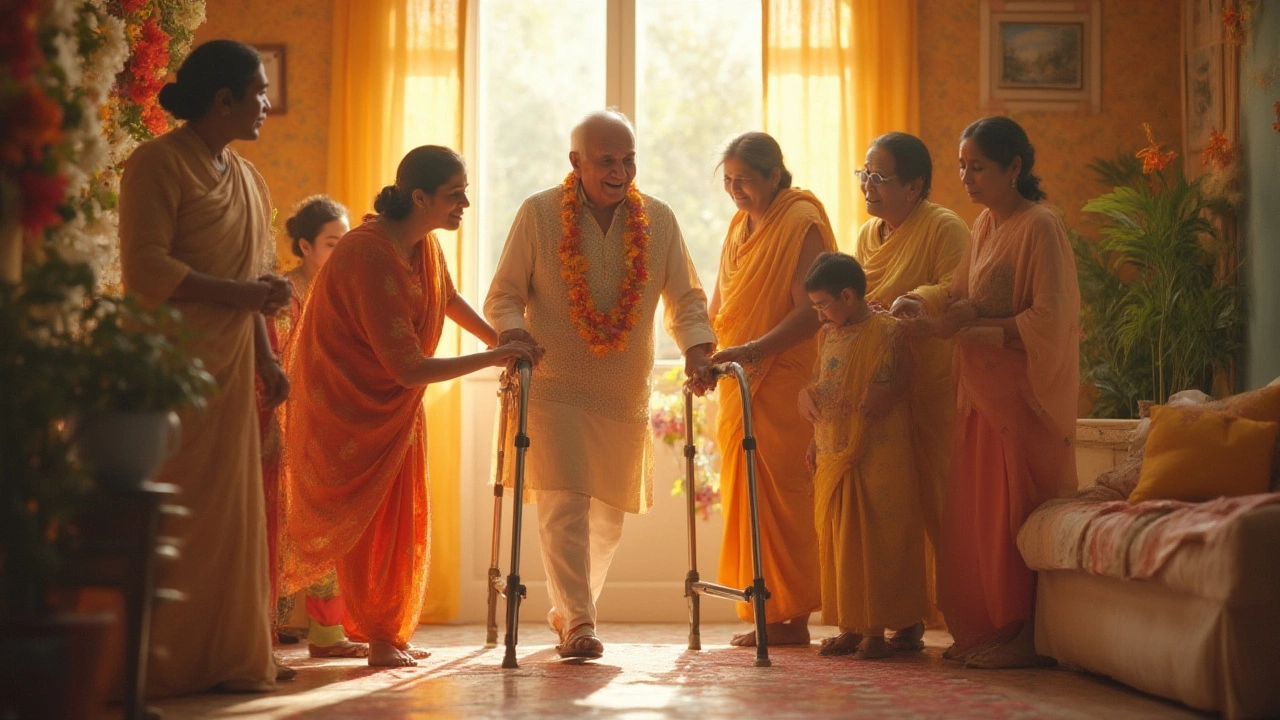There’s nothing quite like the blunt shock of hearing you or someone you love needs open-heart surgery. I remember the first time my friend’s father went through it—suddenly, the entire family’s world shrank to hospital beds, heart monitors, and whispered worries over tea. It’s invasive. It’s daunting. And let’s be real: the big question that haunts every late-night search is, do you ever fully recover? Or does that scar run deeper than the skin on your chest?
What Actually Happens During Open-Heart Surgery?
Open-heart surgery sounds dramatic because it is. During this procedure, a surgeon cuts through the breastbone, opens the ribcage, and works directly on the heart. The most common types are coronary artery bypass grafting (CABG), heart valve repair or replacement, and surgeries for congenital defects, aneurysms, or heart transplants. CABG alone is incredibly common—every year, nearly a million bypass surgeries are performed worldwide. In India, it’s not rare to know a neighbor, uncle, or even a local cricket coach who’s gone through it.
The chest is held open with a retractor while a heart-lung machine takes over pumping blood and oxygen. Think of this as putting your car engine on the workbench while another system keeps things running. Then there’s the patching, the grafting, or the intricate repairs depending on what your heart needs. Finally, the sternum gets wired shut, and the medical team stitches you back up. It’s both brutal and miraculous.
This is not like fixing a sprained ankle. You're dealing with a muscle that beats 100,000 times a day, feeding every organ in your body. The scale of trauma is huge: not just to your heart, but to your bones, muscles, and mind. Most patients spend at least 5-7 days in the hospital, half that time in intensive care. Discharge doesn’t mean recovery is done. It just means the real work is about to begin.
The Physical Recovery Timeline: What to Expect and How Far Most People Get
First, let’s smash a myth: you don’t wake up a brand-new person. Most folks are surprised by just how tough the first weeks can be. You’re exhausted. There’s pain, swelling, bruising, and a kind of raw vulnerability that’s hard to explain. Common symptoms after open-heart surgery include chest pain, stiffness, shortness of breath, disrupted sleep, brain fog, and emotional ups and downs.
Here’s a quick look at the general recovery trajectory:
- First 2 Weeks: High fatigue, wound care is vital, risk of infection is real. Walking to the bathroom feels like climbing Mt. Everest.
- 2–6 Weeks: Gradual increase in activity. Most people can do basic self-care. Some can walk short distances. There's still a heavy reliance on family or caregivers.
- 6–12 Weeks: Chest bone heals. Driving may be possible, light chores resume. You might get out to the shop or sit in your favorite chai spot.
- 3–6 Months: This is when you start feeling somewhat you again—if you don’t push too hard. But getting back to previous activity levels can be a slog.
Many hospitals recommend a formal cardiac rehab program (12–24 weeks). Studies from the European Journal of Preventive Cardiology found that those who complete rehab see a 25% lower risk of future heart events and enjoy better quality of life scores. Still, let’s not sugarcoat it: not everyone attends. In India, only about 10% actually make it to structured rehab. The rest manage with periodic walks at Lalbagh or guided sessions by WhatsApp videos (sometimes both!).
By one year post-op, around 80–85% of patients regain enough strength to resume everyday life. But 'back to normal' doesn’t always mean the same as before. For those younger or otherwise healthy, recovery tends to be smoother. For those with diabetes, kidney issues, or complicated bypasses, the road can be longer.

Permanent Changes: The Realities Nobody Tells You
Scars become part of your story. That central line on the chest—sometimes referred to as 'the zipper'—fades but never truly disappears. The body might heal externally within months, yet inside, changes linger. For example, many people notice a slightly different heartbeat rhythm after surgery. Sometimes nerves get nicked during the procedure, leading to numbness near the incision that lasts for years.
Energy levels might never fully hit pre-surgery highs. Fatigue, at some level, lingers in about 20–30% of patients even a year or two later, according to research from the Cleveland Clinic. That said, for the vast majority, the trade-off is a heart that’s working better than before. Physical strength can return, but it takes effort. Some sports are okay again—walking, cycling, even swimming. But for heavy lifting, marathons, or intense contact sports, doctors usually raise an eyebrow.
The heart itself is changed. Blood vessels are rerouted; valves might be plastic or pig-derived. Medications become a daily ritual: beta-blockers, aspirin, cholesterol pills, and maybe blood thinners. Missing doses? Not an option anymore. Life just gets a new normal.
I won’t lie—some men (and women) struggle with depression or anxiety after this ordeal. You start to question your own body’s reliability. My buddy, Rajeev, confided over idli-sambar that it took him a year before he could watch a cricket match without feeling a small panic about chest pain. Emotional recovery is just as real as physical healing; support groups, therapy, and open chats with family can work wonders.
Lifestyle After Surgery: What You Need to Change and Why
Open-heart surgery is a reset button, but not in the magic-fix kind of way. It’s a wake-up call. Doctors, especially the straight-talking ones in Bangalore’s heart hospitals, don’t mince words: if you slip back to old patterns, the risk of a repeat event is high.
Here’s what stays on the table (and what comes off):
- Diet: Even post-surgery, diet is king. More veggies, lean proteins like fish and dals, less ghee and fried snacks. A study in the Indian Heart Journal found that patients who stuck to a Mediterranean diet (think olive oil, nuts, a rainbow of vegetables) halved their risk of further heart complications.
- Exercise: Walking is usually safest and most encouraged. Slowly build up to 30 minutes per day. Yoga helps—several cardiac patients in my neighborhood join morning sessions to manage stress and flexibility.
- Medications: Don’t skip. Set alarms if you must. One missed blood thinner pill can bring trouble.
- No More Smoking: If you smoked before, this is a hard line doctors enforce. Even secondhand smoke is risky.
- Regular Checkups: Follow-ups every 3–6 months (sometimes more often). Doctors look for blood pressure, sugar control, and cholesterol checks.
Alcohol is a big cultural dilemma. While small, occasional drinks might be allowed after doctor approval, binge drinking is a no-go. My uncle still sighs about his lost weekend whiskeys, but honestly, the trade-off is worth it.
Sleep matters, too. A 2023 study from AIIMS Delhi pointed out that heart surgery patients who got 7–8 hours of sleep managed better healing and less depression. Night owls—beware.

Real Outcomes: Stats, Hope, and What Recovery Looks Like for Most People
The numbers aren’t as bleak as you might fear. The five-year survival rate after most open-heart surgeries stands strong—close to 85% for bypass, and even higher for some valve repairs. What’s more, patients often live longer and with far less chest pain (angina) than before. Quality of life goes up, not down.
If you want the hard facts, check out this quick table comparing different open-heart procedures and recovery outlooks:
| Type of Surgery | Hospital Stay (Avg) | 1-Year Survival | Return to Work (Avg Time) |
|---|---|---|---|
| Bypass (CABG) | 5–7 days | 95% | 3 months |
| Valve Replacement | 7–10 days | 92% | 4 months |
| Congenital Repairs | 7–14 days | 98% (in fit patients) | 6 months |
| Transplant | 2–4 weeks | 85% | Varies (6+ months) |
Not everything bounces back. Taste can change, your sleep might be restless for a bit, and intimacy takes time (most doctors give the green light if you can comfortably climb two flights of stairs).
But here’s the thing that never fails to strike me: I’ve seen folks in their 50s and 60s blossom after surgery, hiking Nandi Hills or chasing after grandkids at Cubbon Park. Not one says the journey is easy, but nearly all admit they’re grateful for this second shot at life. 'Fully recovered' might look different on everyone, but a richer, more mindful life is entirely possible—and honestly, worth the battle.
